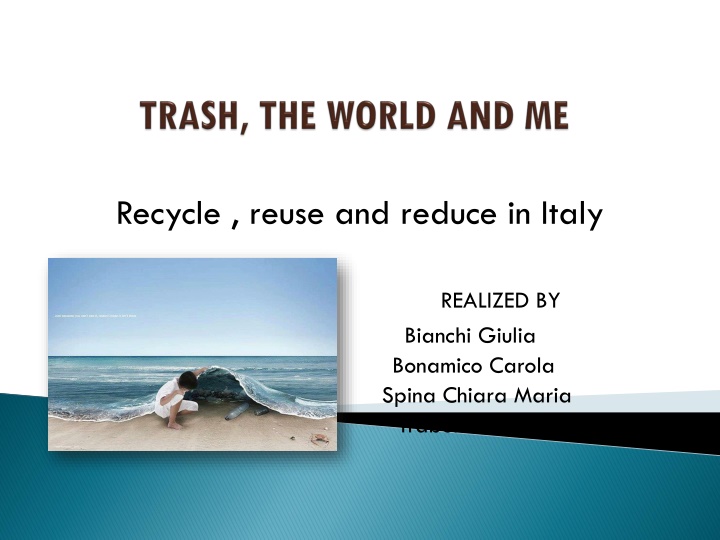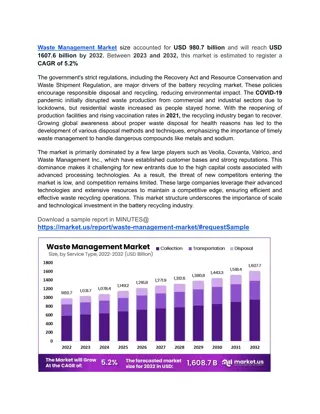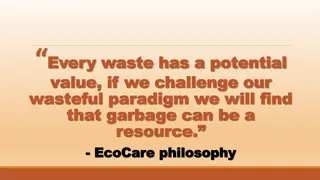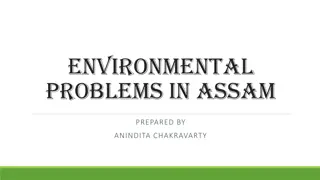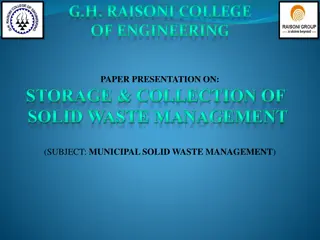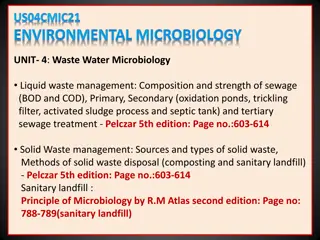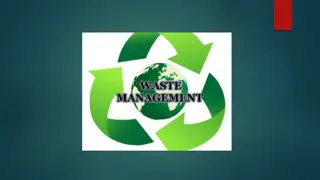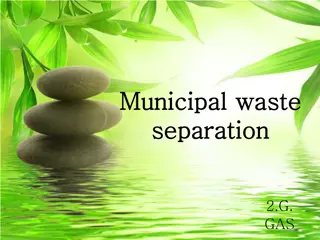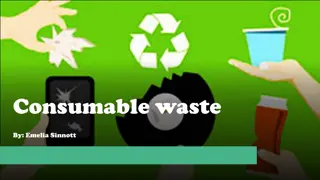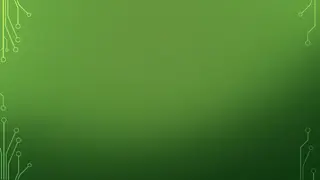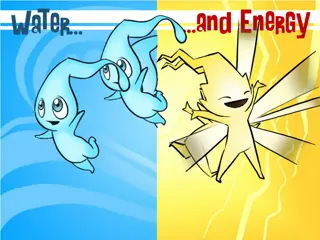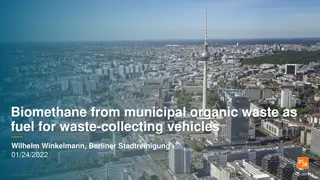Sustainable Waste Management Initiatives in Italy
The "Recycle, Reuse, and Reduce in Italy" project led by Bianchi Giulia, Bonamico Carola, Spina Chiara Maria, and Trabona Lucrezia highlights Italy's efforts to tackle waste production and pollution. Over the years, Italy has made progress in reducing annual waste and increasing recycling rates, with initiatives like Coop's 3R strategy and the EU's GreenBottle Project contributing to a more sustainable future. Despite challenges, including fines for improper waste disposal, Italy aims to further improve waste management practices to protect the environment.
Download Presentation

Please find below an Image/Link to download the presentation.
The content on the website is provided AS IS for your information and personal use only. It may not be sold, licensed, or shared on other websites without obtaining consent from the author.If you encounter any issues during the download, it is possible that the publisher has removed the file from their server.
You are allowed to download the files provided on this website for personal or commercial use, subject to the condition that they are used lawfully. All files are the property of their respective owners.
The content on the website is provided AS IS for your information and personal use only. It may not be sold, licensed, or shared on other websites without obtaining consent from the author.
E N D
Presentation Transcript
Recycle , reuse and reduce in Italy REALIZED BY Bianchi Giulia Bonamico Carola Spina Chiara Maria Trabona Lucrezia
The trashedworld project is about world pollution, the waste that people produce and how we could solve the problems of disposal. In this presentation we ll speak about Italy.
In the last two years the rubbish produced in Italy has decreased compared to the past. Here is some information about Italian annual waste: 2013: 31 386 tons; 2014: 29 994 tons; 2015: 29 573 tons. Per person production (kg/inhabitant every year): 2013: 550 kg; 2014: 500 kg; 2015: 480 kg. The information of the Waste Watcher 2015 shows that the main waste Italian people produce is food, in fact, Italian waste costs 8.4 billion Euros every year!
In Italy there are lots of rubbish dumps and landfills compared to recycling plants; anyway, a big percentagel of waste is recycled. The recycled materials are usually glass, plastic and paper: 45% of rubbish is recycled; 39% of waste is filled in rubbish dumps; 16% is incinerated. Recycled Lands filled Rubbish dumps incinerated 16% 16% 45% 45% 28% 28% 11% 11% WHERE DOES WASTE GO?
The European Union and Italy are working on some projects to help the environment and produce less waste: Some SUPERMARKETS in Italy are busy reducing waste: Coop uses the 3R strategy (saving money, re-using and recycling) to decrease packaging waste production. Ikea shares waste that is recycled or used for energy recovery. The European Commission announced plans to recycle 70% of Municipal waste (MW) and 80% of packaging waste by 2030. This proposal also includes a ban on burying recyclable waste in a landfill. These new targets would create about 580 000 new jobs. 1. 2.
The EU launched the GreenBottle Project that created an innovative packaging for liquids which use up to 1/3 less plastic than conventional plastic bottles and significately less laminated carton. The GreenBottle Project packaging is also more environmentally friendly than glass!
Valenza, Piedmont, is a litter-free area and our neighbourhood is relatively clean. In this town there are a lot of bins but sometimes people don't use them. We think people must use bins to save the environment and in Italy there are fines for people that throw away their rubbish.
Italian families always separate paper, plastics and glass from other materials that are collected together. There are also other types of waste such as batteries, oil and you can donate clothes to associations which need them! People usually produce these percentages of materials
Rubbish and waste can be collected in different types of bins: blue ones for paper; green ones for glass; brown ones for food and organic materials; yellow ones for plastics; black ones for metal.
To minimize waste production at our school we devised a project that consists of separating paper and plastic from other materials to help the environment. We also do it to let people know that every little action is very important.
